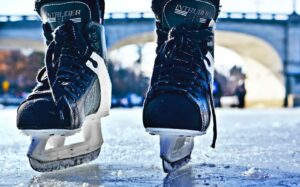
Polo: Muscles, Injuries & Treatments for a Stronger Ride
Discover the muscles used in Polo, common injuries, effective treatments, and safety tips to improve your performance on the field.
Discover a wealth of essential resources to enhance your athletic performance, reduce the risk of injuries, and accelerate the rehabilitation process with “Your Sport.” This comprehensive guide provides a wealth of information about common muscles used in your sport, typical injuries, and the latest rehabilitation techniques to help you stay in top form. Whether you are a beginner or seasoned athlete, “Your Sport” offers valuable insights and resources to help you excel in your athletic pursuits.

Discover the muscles used in Polo, common injuries, effective treatments, and safety tips to improve your performance on the field.

Discover how to prevent and treat common injuries in Ringette, while building strength and endurance for a stronger game.

Unlock Your Endurance Potential: Get Stronger, Prevent Injuries, and Succeed in Triathlon with Our Comprehensive Guide.

Jet ski racing is an adrenaline-fueled water sport that requires strength, endurance, and quick reflexes. However, it also comes with its fair share of injuries. In this article, we’ll cover

Discover the key muscles used in Bandy, how to prevent common injuries, effective treatments, and conditioning strategies.
Stay up to date with our latest news, receive exclusive deals, and more.
Common injuries in polo include falls, fractures, strains, sprains, and head injuries.
To prevent injuries while playing polo, it is important to warm up properly, wear protective gear, use proper technique, and maintain good physical conditioning.
Treatment for polo injuries can include rest, ice, compression, elevation, physical therapy, and in some cases, surgery.
To build strength and endurance for polo, it is important to incorporate exercises such as squats, lunges, planks, and shoulder presses into your training regimen. It is also important to maintain a healthy diet and get enough rest and recovery time.